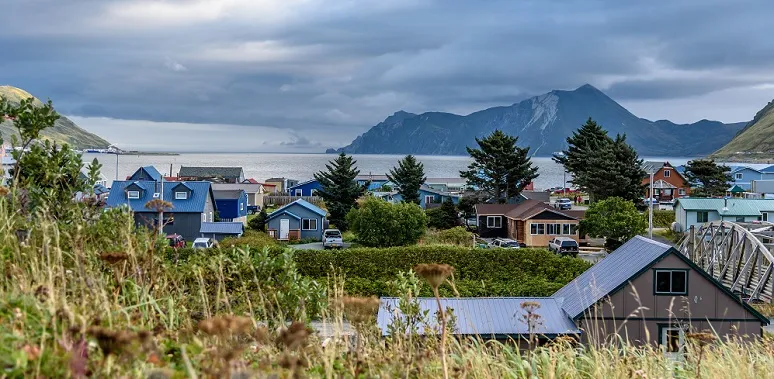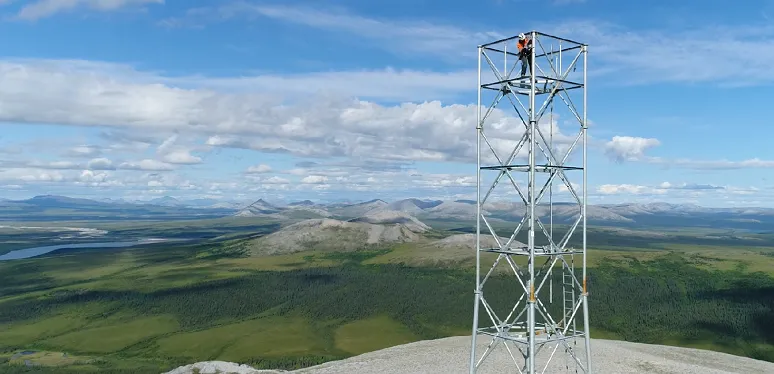In 1979, an Alaskan technology entrepreneur, Ron Duncan, started GCI in an apartment located in the small neighborhood of Bootleggers Cove in Anchorage, Alaska, with only three employees including himself. Fresh out of business school, Duncan wanted to bring competition to the long-distance market. Fast forward more than 40 years, and GCI has expanded its services significantly. Now Alaska’s largest internet service provider with over 1,800 employees with Duncan still at the helm, GCI has deployed more than 10,000 miles of long haul, middle mile, and last mile infrastructure in hundreds of communities across the state.
To date, GCI has invested more than $4 billion in its statewide network, with approximately $3.3 billion of that investment being made since 2002—and resulting in an exponential expansion of its network infrastructure over the past two decades.
20 Years of Exponential Progress
“The past 20 years in particular have seen a boom in terms of the investment we are making across the state to build out our wireless networks,” remarked Heather Handyside, GCI chief communications officer. The ISP has expanded its major projects with fiber up to the North Slope and ensured that there are redundant fiber services there to serve the growing resource development industry.
And in 2011, GCI launched the 3,300-mile long TERRA network, which serves 84 communities and 45,000 people in remote Western Alaska. To build out the network, GCI leveraged over $44 million in federal funds but used over $200 million of its own at-risk capital, and continues to make investments to operate and maintain that network. Some of these communities have as few as 200 people. These investments have made telehealth and remote education a reality for many in rural Alaska, where roads are often impassable, and airplanes are sometimes the only mode of transportation.
“It really has been a compressed timeline getting to see telecommunications history in some of these more remote communities,” said Handyside. “Building out in rural communities, connecting rural health clinics, and enabling those clinics to provide remote services for medical care, mental health services, dentistry services—these are all things that we in rural Alaska have been doing for more than a decade. Having that access and what it means for rural Alaskans has been a huge game changer.”

An Economic Engine for Alaska
Notably, while GCI was building out the TERRA network, its capital budget was even larger than the state’s own capital budget, said Handyside. “To have these mega projects that require technical expertise, shipping, fuel, and all of these services that help different sectors in the economy—it has had ripple effects, especially in rural Alaska.”
In terms of workforce, GCI is unique in that the employees serve their own communities. These include site agents who can stay in the communities where they grew up and continue to foster Alaskan culture, instead of having to relocate for solid employment. Specially trained tower climbers are also part of GCI’s workforce, who are dispatched at a moment’s notice. There is also an entire workforce division dedicated solely to serving rural Alaska.
“Our employees have to be competent, well-rounded, expert technicians who travel in rural Alaska because when they go out to these sites they could encounter a power issue, a wiring issue, they might have to change a light at the top of the tower,” explained Handyside. “They need to be hardy people because you have to travel there by helicopter, or sometimes by snow machine, and willing enough to stay over several nights in GCI’s shelters if weather incidents cause work to cease temporarily. It takes a special kind of person to have all of those qualities.”
Capital Investment and Federal Funding Opens Doors
Another point of growth has been GCI’s operation of subsea fiber. By the end of 2022, GCI will have deployed more than 6,000 miles of subsea fiber, up from 2,330 in 2002. “Between fiber to the premises, subsea fiber, terrestrial fiber, we probably have more tools in our toolkit in terms of delivering connectivity than perhaps other companies do,” said Handyside.
Moreover, having that experience is also why GCI is well positioned to connect the Aleutian Islands. GCI is slated to bring 2 gigabit services to Unalaska, home of the “Deadliest Catch,” one of the most remote communities in the nation, by the end of this year. This kind of connectivity will not only support consumers, but also the maritime industry, opening up further opportunities. The $58 million project will serve approximately 7,000 people, but a $25 million grant from USDA’s RUS program made the project possible.

“Because of the investment in our fiber network over time, we are now on the path to launching 10 gigs,” said Handyside. Today, 80% of Alaskans served by GCI’s fiber network have access to 2 gigs.
“In Alaska more than anywhere else, it could be really difficult to make a financial model that makes sense in terms of making the investment in the network to deploy services to these small communities,” said Handyside, using the Aleutians as an example and the federal funding that made it economically feasible.
Handyside is also optimistic about GCI’s future and the limitless opportunities that lie ahead. “As we move forward, places where we used to think it wouldn’t be viable to deliver services because of the vast distance, enormous cost, the remote nature, the climate, or the technology we would need to make it happen—it’s now a possibility. And with the new federal funding that is going to be available [through the Infrastructure Investment and Jobs Act], what this is going to allow us to do is push further into communities with fiber, which is our primary focus, but also to provide upgraded services in some communities where fiber is not a possibility,” she explained. “It really is an opportunity that we want to be strategic about and take advantage of to deploy in the best way to reach the most people, and with the best technology.”









